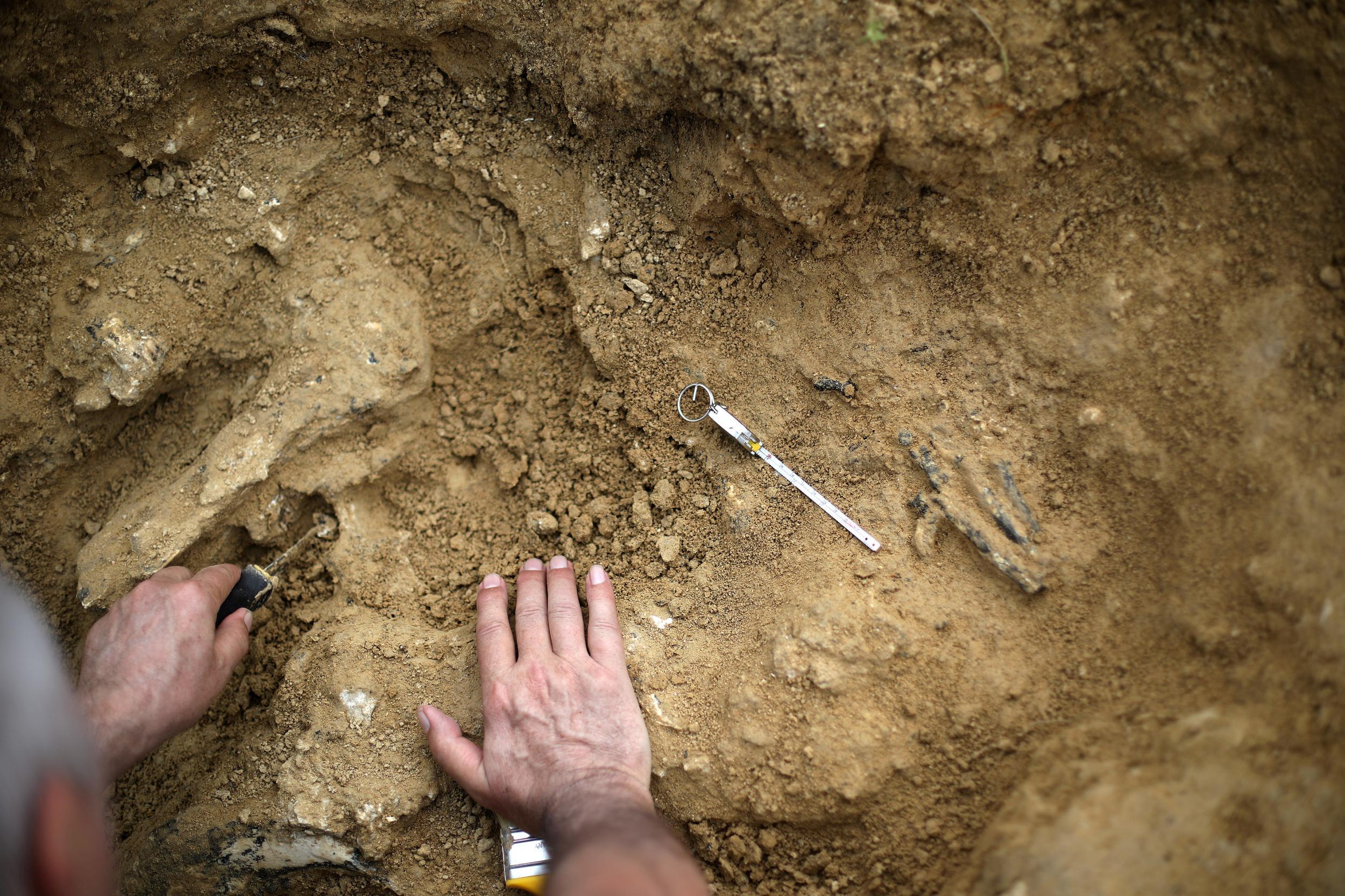Nine-year-old boy trips, falls and discovers one-million-year-old fossil
'This is really very unusual to find,' Professor Peter Houde says

Your support helps us to tell the story
From reproductive rights to climate change to Big Tech, The Independent is on the ground when the story is developing. Whether it's investigating the financials of Elon Musk's pro-Trump PAC or producing our latest documentary, 'The A Word', which shines a light on the American women fighting for reproductive rights, we know how important it is to parse out the facts from the messaging.
At such a critical moment in US history, we need reporters on the ground. Your donation allows us to keep sending journalists to speak to both sides of the story.
The Independent is trusted by Americans across the entire political spectrum. And unlike many other quality news outlets, we choose not to lock Americans out of our reporting and analysis with paywalls. We believe quality journalism should be available to everyone, paid for by those who can afford it.
Your support makes all the difference.A young boy from New Mexico recently made an accidental discovery that’s sure to make his classmates – and scientists around the world – extremely jealous.
Nine-year-old Jude Sparks was walking with his family in Las Cruces, New Mexico when he tripped and fell over something protruding from the dirt.
On further examination, he and his brother determined it to be the remains of a “big fat rotten cow”. The two brought it to their parents, who identified it as an elephant skull.
They were all wrong.
According to Peter Houde, a biology professor at New Mexico State University who the family consulted, the skull belonged to a 1.2 million-year-old Stegomastodon – a distant relative of the elephant, similar to a mastodon.
“This is really very unusual to find,” Mr Houde told The New York Times, adding that it was “fantastic” that such a young person had made the discovery.
Stegomastodon fossils are a rare find in the US, for reasons scientists have yet to pin down. Only a couple hundred have been found in the world, according to Spencer Lucas, curator of palaeontology at the New Mexico Museum of Natural History and Science.
After talking to the Sparks family in November, Mr Houlde quickly got to work gathering a team, securing a permit, and finding funding for the dig. He conducted the final excavation in May – six months after the initial discovery.
“We’re really, really grateful that [the Sparks family] contacted us, because if they had not done that, if they had tried to do it themselves, it could have just destroyed the specimen,” Mr Houde said. “It really has to be done with great care and know-how.”
Mr Houde now hopes to put the fossil on display at the university.
As for Jude, the whole experience has reignited his interest in – and greatly expanded his knowledge on – the field of palaeontology.
“I’m not really an expert, but I know a lot about it, I guess,” he told the Times.
Subscribe to Independent Premium to bookmark this article
Want to bookmark your favourite articles and stories to read or reference later? Start your Independent Premium subscription today.
Join our commenting forum
Join thought-provoking conversations, follow other Independent readers and see their replies
Comments